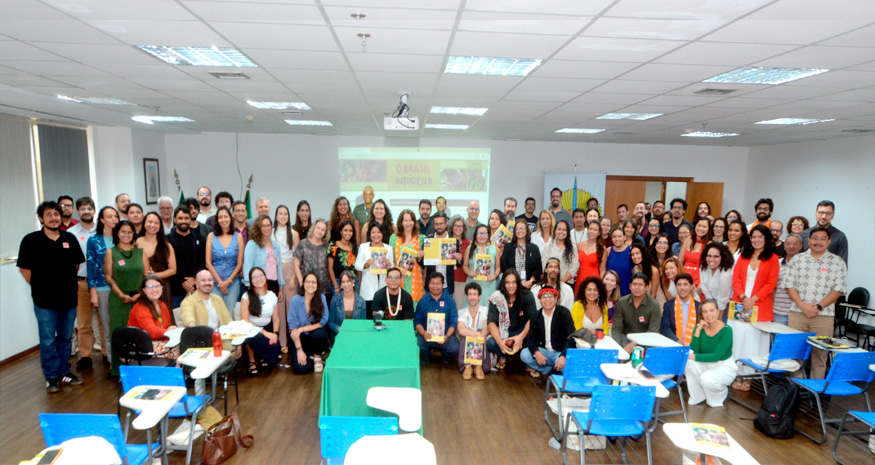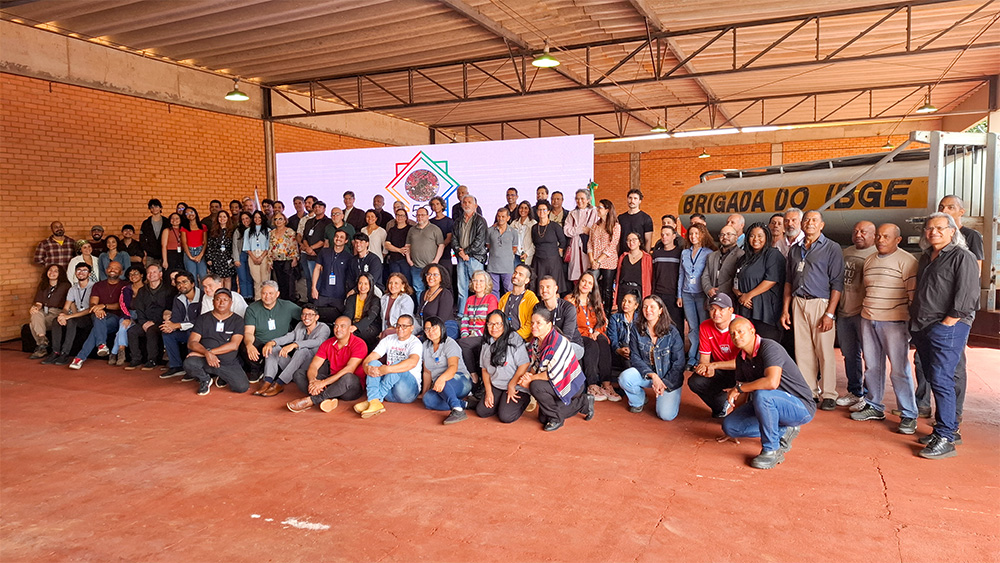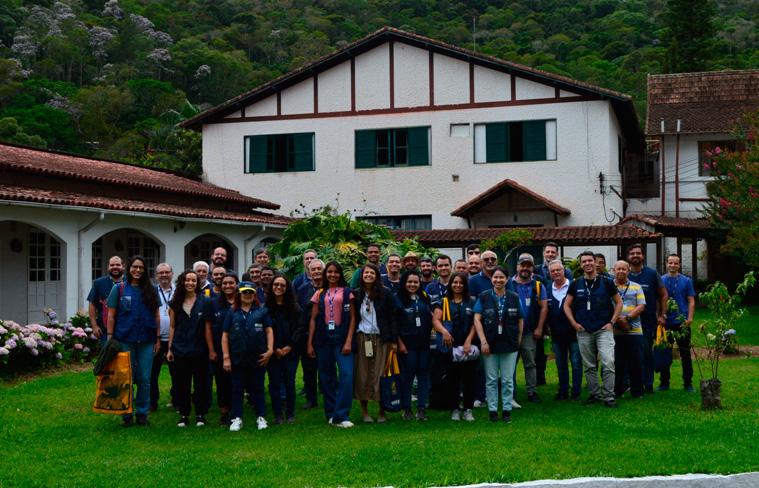Continuous PNAD
In the quarter ended in September, unemployment rate is 5.6%, repeating the lowest rate since 2012
October 31, 2025 09h00 AM | Last Updated: November 03, 2025 05h39 PM

The unemployment rate for the moving quarter ending in September 2025 fell to 5.6%, repeating the lowest rate in the time series that began in 2012. Compared to the moving quarter from April to June (5.8%), the rate decreased by 0.2 percentage points. Compared to the quarter ended in September 2024 (6.4%), the indicator fell by 0.8 percentage points. The data comes from the Continuous National Household Sample Survey (Continuous PNAD), released today (31) by the IBGE.
In the quarter, the unemployed population fell to its lowest level since the beginning of the survey in 2012: 6.045 million, decreasing in both comparisons: -3.3% (209,000 fewer people) in the quarter and -11.8% (809,000 fewer people) year-on-year. The total number of workers in the country remained stable at 102.4 million, still at a record level, while the employment rate (percentage of employed persons in the working-age population) stood at 58.7%. The number of employed persons with formal contracts renewed its record, reaching 39.229 million.
The composite underutilization rate fell to 13.9%, the lowest in the time series of the Continuous National Household Sample Survey (Continuous PNAD). The time-related underemployed population decreased to 4.535 million, the lowest number since the quarter ending in April 2016.
The potential labor force decreased to 5.2 million, the lowest number since the quarter ending in December 2015. During the pandemic, in the May-July 2020 quarter, this indicator had reached its peak: 13.8 million. The discouraged population fell to 2.637 million, after reaching its highest value (5.829 million) in the January-March 2021 quarter.
According to Adriana Beringuy, coordinator of household surveys at IBGE, “the high level of employment in recent months indicates the sustainability of the reduction in unemployment throughout 2025.”
In the quarter, Agriculture and Construction grew, but Trade and Domestic Services declined
Although the country's employed population remained statistically stable compared to the previous moving quarter, two of the ten activity groups investigated by the Continuous PNAD showed growth during the period: Agriculture, livestock, forestry production, fishing and aquaculture (3.4%, or an increase of 260,000 people) and Construction (3.4%, or an increase of 249,000 people). There was a reduction in two groups: Trade, repair of motor vehicles and motorcycles (1.4%, or a decrease of 274,000 people) and Domestic services (2.9%, or a decrease of 165,000 people), with stability in the others.
Compared to the same moving quarter of 2024, employment increased in two groups: Transportation, storage and mailing (6.7%, or an increase of 371,000 people) and Public administration, defense, social security, education, human health and social services (3.9%, or an increase of 724,000 people). There was a reduction in the Domestic services group (5.1%, or a decrease of 301,000 people) and stability in the others. Adriana observes that “in this third quarter, the drop in the number of workers was concentrated in Trade (food/beverage segments; wearing apparel and footwear) and domestic services. Part of this loss was compensated by the expansion of workers in Agriculture and Construction, which contributed to the stability of the total employed population.”
Informality remains stable and the number of workers with formal contracts reaches a new record
In the quarter ending in September, the informality rate was 37.8% of the employed population, or 38.7 million informal workers, repeating the 37.8% of the previous moving quarter. However, this rate was below the 38.8% (or 39.2 million informal workers) of the quarter ended in September 2024.
The number of private sector employed persons with formal labor contracts reached a new record, achieving 39.229 million and showing stability in the quarter. Compared to the previous year, this contingent grew by 2.7% (an increase of 1.0 million workers). The number of employed persons in the public sector (12.8 million) remained stable in the quarter and increased by 2.4% (an increase of 299,000 workers) year-on-year.
The number of employed persons without formal contracts in the private sector (13.5 million) remained stable in the quarter and decreased by 4.0% (a decrease of 569,000 workers) year-on-year. The number of self-employed workers (25.9 million) also remained stable in the quarter and grew by 4.1% (an increase of 1 million) year-on-year.
Wage bill of employed population reaches new record: R$ 352.3 billion
The total real average earnings reached a new record, achieving R$ 354.6 billion, showing stability in the quarter and a 5.5% increase (an increase of R$ 18.5 billion) year-on-year.
The average real usual earnings of workers also reached a record high, remaining statistically stable in the quarter and growing by 4.0% year-on-year. In the quarterly comparison, only one occupation category saw an increase in income: Lodging and food (5.5%, or an increase of R$ 122), with stability in the others.
Compared to the July-September 2024 quarter, there was an increase in five categories: Agriculture, livestock, forestry, fishing and aquaculture (6.5%, or an additional R$ 134), Construction (5.5%, or an additional R$ 145), Information, Communication and Financial, Real Estate, Professional and Administrative Activities (3.9%, or an additional R$ 184), Public administration, defense, social security, education, human health and social services (4.3%, or an additional R$ 199) and Domestic services (6.2%, or an additional R$ 79). The other groups did not show significant change.
Adriana Beringuy observes that “even in a context of stability in the current quarter, the wage bill registers a record value due to real earnings gains and expansion of the workforce achieved in the first half of 2025."
More about the survey
The Continuous National Household Sample Survey (Continuous PNAD) is the main instrument for monitoring the country's workforce. Its sample corresponds to 211,000 households, distributed across the 26 states and the Federal District, which are visited every quarter. Approximately two thousand interviewers work on collecting the survey data, integrated into the network of more than 500 IBGE agencies.
Due to the Covid-19 pandemic, the IBGE implemented the collection of survey information by telephone starting on March 17, 2020. In July 2021, in-person data collection was resumed.
It is possible to confirm the interviewer's identity on the "Respondendo ao IBGE" website or via the Call Center (0800 721 8181), checking the interviewer's registration number, ID card, or CPF (Brazilian tax identification number), data which can be requested by the informant.
You can consult the results of the Monthly Continuous National Household Sample Survey (Monthly Continuous PNAD) on Sidra. The next release, referring to the quarter ended in October, will be on November 28.




















